Search Results for Tag: Nepal
Luis, last minute
In one point it is the same for mountaineers who want to climb an eight-thousander and for everyday travellers: Shortly before departure the dates are accumulating. They have to pave the way for their long absence in their jobs, meet friends and family and – last but not least – make the last preparations for the upcoming project. That applies to Luis Stitzinger, too. We met last weekend in Oberstdorf in the Alpes, the day before Luis’ departure to Nepal. The 45-year-old German and his wife Alix von Melle want to climb again Makalu, at the height of 8485 meters the fifth highest mountain in the world. In 2010, the couple had to turn back on 8050 meters at temperatures of minus 45 degrees Celsius. Alix and Luis have already climbed six eight-thousanders: Cho Oyu, Gasherbrum II, Nanga Parbat, Dhaulagiri, Broad Peak and Shishapangma, all without using bottled oxygen. This makes the 43-year-old Alix the most successful German women at the highest mountains in the world.
![]() read more
read more
Goal: A new route to the top of Kangchenjunga
Even if it may seem in spring again as though there was only Mount Everest, it is also worth looking to other eight-thousanders. A highly qualified team has been formed to open a new route via the north face of Kangchenjunga: Denis Urubko and Artem Brown from Russia, Adam Bielecki from Poland and the Basque Alex Txikon. Urubko has initiated the project. Denis, who was born in Kazakhstan but is now a Russian citizen, wants to draw a definite line under the past year which was so unfortunate for him.
![]() read more
read more
Less expeditions, less money
Nepal sees his mountain luck run out. “The government must frame policies to gain a competitive edge”, a report by the Ministry of Culture, Tourism and Civil Aviation said which was quoted in the “Himalayan Times”. The neighbouring countries had started aggressive campaigns to attract more climbers. India had offered a discount of 50 per cent on climbing fees, Pakistan had waived off royalties for all peaks below 6500 meters, the report said. Nepal is charging fees for mountains which are much lower, e.g. for 5500-meter-high Chhukung Ri, a popular trekking peak in the Khumbu region.
![]() read more
read more
Was Ines the first after all?
It’s getting even more exciting: Maybe German climber Ines Papert has climbed the 6718-meter-high Pig Pherado Shar in Nepal firstly after all. Billi Bierling, staff member of Himalayan chronicler Elizabeth Hawley, has drawn my attention to this option. The mountain is also known as Likhu Chuli I. I had referred to a note in Hawley’s database that a French team led by Robert Sandoz had already climbed the 6000er near Namche Bazaar on 21 October 1960. Billi writes that the French climbers maybe instead reached the summit of the 6659-meter-high Likhu Chuli II (Pig Pherago Nup). So the question is: Likhu Chuli I or II? “The database says ‘I’, but we believe that it is a mistake!”, writes Billi. The research is going on. If there is any news from Kathmandu, I will of course inform you. By the way: first ascent or not, the performance of Ines Papert deserves our applause anyway.
No decision yet on “new” 8000ers
Nepal has to be patient for about one more year. At its general assembly in Pontresina in Switzerland the International Mountaineering and Climbing Federation (UIAA) has not yet decided whether it will recognize additional 8000-meter-peaks or not. According to the Nepal Mountaineering Association a UIAA commission had named six side peaks that could be accepted as prominent peaks with a unique identification: Kanchenjunga West-Peak (alias Yalung Kang, 8505 m), Central-Peak (8473 m) and South-Peak (8476 m), Lhotse Central-Peak (8410 m) and Shar (8382 m), Broad Peak Central (8011 m). “Both Nepal and China Mountaineering Association delegates welcome and fully support the UIAA initiation”, Nepalese Ang Tshering Sherpa, Honorary member of UIAA, wrote to me after his return from Switzerland. “Also Pakistan Alpine Club and Indian Mountaineering Foundation delegates were very positive but need more time to get approval from their association’s annual general meeting which will be held end of Dec 2013 or January 2014.”
![]() read more
read more
Apa Sherpa: Everest is our greatest treasure
Will Apa Sherpa feel melancholy these days? Climbers from all over the world are arriving at Everest basecamp on the south side of the mountain. Meanwhile the so called „Ice Doctors” have prepared the route through the dangerous Khumbu icefall up to Camp 2 on 6600 metres. The climbing season on the highest mountain of the world is ready to start. For more than two decades Everest was an integral part of Apa’s life. Nobody has reached the top of the world as often as this 1.63 metre tall man: He reached the summit 21 times and became a living legend. In 2011 Apa finished his Everest career. Now he is about 53 years old. He doesn’t know for sure because in the 1960s no birth certificates were issued for Sherpas in his home village Thame in the Everest region.
![]() read more
read more
Brice: Everest is the ‚hidden giant’ of Nepal
Just now Russell Brice has a lot on his plate. The 60-year-old climber from New Zealand, owner of Himalayan Experience, is leading his 18th commercial expedition to Mount Everest. The most prominent of his ten clients who want to climb the highest mountain of the world is Evelyne Binsack. In 2001 she was the first woman of Switzerland who scaled Everest coming from the Tibetan north side of the mountain. This time Evelyne, aged 45, will try it from the south, for a documentary she also wants to carry her camera to the summit. Russell will stay at the bottom as basecamp manager, also looking after six climbers for Lhotse and four women who want to scale the 7861-metre high Nuptse. German journalist and mountaineer Billi Bierling is a member of this last mentioned team. Although Russell is „quite busy”, as he wrote me, he has taken time to send me his thoughts on occasion of the 60-year-jubilee of the first ascent of Mount Everest.
![]() read more
read more
Dawa Steven Sherpa: Everest belongs to all of us
Mount Sherpa. That would be a better suited name for the highest mountain of the world, which instead was named after Sir George Everest, a Surveyor-General of India in the 19th century. The history of Mount Everest is also a history of the Sherpas. The „eastern people” who had fled from Tibet to Nepal in earlier times were engaged for the early British expeditions in the 1920s. One of the two climbers who scaled Everest first in 1953 was a Sherpa: Tenzing Norgay. At the latest since commercial climbing was established on Everest sherpas have become indispensable. Without their support most of the clients wouldn’t have any chance to reach the summit. Due to this important role sherpas have an excellent reputation all over the world, many have achieved modest prosperity. Sherpas are also working as successful entrepreneurs, doctors or pilots. They know that these achievements are due to Everest. „As a Nepali, Mount Everest is my identity to the world. As a Sherpa, Mount Everest is the reason we have education, health care and prosperity”, Dawa Steven Sherpa wrote to me. „As a mountaineer, Mount Everest is the playground where I learned to explore myself, my limitations and my abilities as a person.”
![]() read more
read more



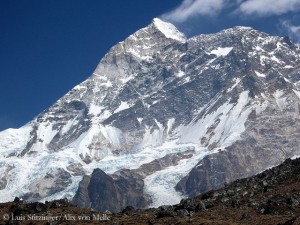

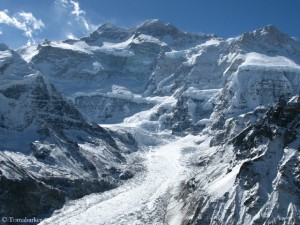
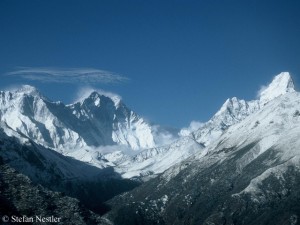
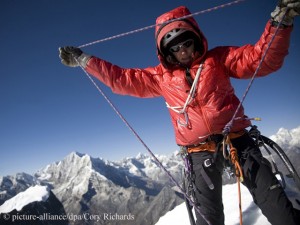
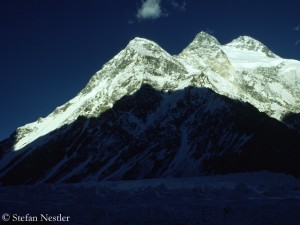

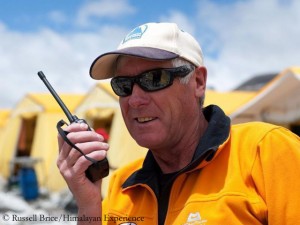






Feedback